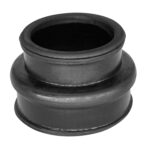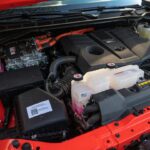Choosing the right glue for your car spoiler is crucial for a secure and lasting bond. A poorly attached spoiler can detach at high speeds, causing damage to your vehicle or even posing a safety hazard. This guide will walk you through selecting the best adhesive for your car spoiler installation.
Factors to Consider When Choosing Spoiler Adhesive
Several key factors will influence your choice of car spoiler glue:
Type of Spoiler Material
Different spoiler materials require different types of adhesive. Common spoiler materials include:
- ABS Plastic: A common and durable plastic that bonds well with various adhesives like epoxy, polyurethane, and acrylic-based glues.
- Fiberglass: A strong and lightweight material that often requires specialized epoxy or polyurethane adhesives for optimal bonding.
- Carbon Fiber: A high-performance material demanding high-strength epoxy adhesives designed for carbon fiber applications.
Identifying your spoiler’s material is the first step in selecting the right glue.
Bonding Strength and Flexibility
The adhesive must provide sufficient bonding strength to withstand the high forces and vibrations experienced at high speeds. Flexibility is also important to accommodate the spoiler’s movement and prevent cracking under stress. Polyurethane adhesives are known for their strong and flexible bond.
Environmental Resistance
Your chosen adhesive should be resistant to various weather conditions, including temperature fluctuations, UV exposure, moisture, and chemicals like car wash soap. Consider a weatherproof and UV-resistant adhesive for long-term durability.
Ease of Application
Some adhesives are easier to apply than others. Consider your experience level and choose an adhesive with a manageable working time and application method. Cyanoacrylate (super glue) offers quick bonding but requires precise application, while epoxy provides more working time.
Popular Glue Options for Car Spoilers
Several adhesive types are commonly used for car spoiler installation:
Epoxy
Epoxy adhesives offer excellent strength, durability, and gap-filling capabilities. They are suitable for various spoiler materials and provide a strong, lasting bond.
Polyurethane
Polyurethane adhesives are known for their flexibility and resistance to vibration and impact. They are a good choice for applications requiring a strong yet flexible bond.
Modified Acrylic
Modified acrylic adhesives provide a strong bond and good environmental resistance. They are often used in automotive applications due to their versatility.
Tips for Successful Spoiler Installation
Beyond selecting the right glue, proper surface preparation and application techniques are crucial for a successful installation:
- Clean Surfaces: Thoroughly clean both the spoiler and the car’s surface with a suitable cleaner and degreaser to remove any dirt, wax, or contaminants that can weaken the bond.
- Roughen Surfaces (if necessary): Lightly sanding the bonding surfaces can improve adhesion, especially for smooth materials.
- Apply Evenly: Apply the adhesive evenly to both surfaces, following the manufacturer’s instructions.
- Clamp and Cure: Use clamps or tape to hold the spoiler in place while the adhesive cures completely. Follow the manufacturer’s recommended curing time.
Choosing the right glue for your car spoiler is essential for a successful installation. By considering the factors discussed in this guide and following proper application techniques, you can ensure a secure and long-lasting bond. Remember to consult the adhesive manufacturer’s instructions for specific application guidelines.


